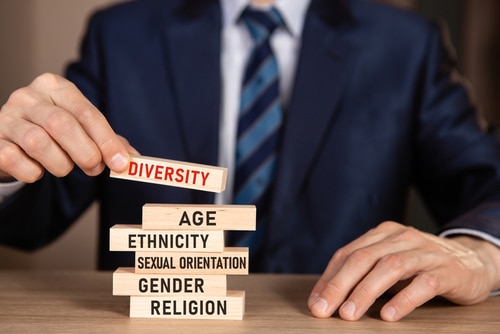When people think of “diversity and inclusion” (D&I), invariably their minds immediately go to racial and ethnic identity, with gender likely coming in a relatively close second. Indeed, both the presence and the inclusion of women and people of color represent key elements of any D&I strategy; however, the diversity of human beings spans far more than just these two dimensions. 
Diversity Extends Beyond Race/Gender
On September 20, 2021, The McKenzie Delis Foundation, a charitable organization, committed to moving the dial on diversity, equity, inclusion, and belonging in the workplace, and Ipsos, the third-largest market research company globally, announced the launch of the first-ever comprehensive review of corporate practices against 10 facets of workplace D&I—the 2021 McKenzie-Delis Review on Diversity and Inclusion, which will provide an expanded understanding of D&I
If 10 facets sound like an awful lot of diversity elements, it may be a sign you haven’t spent enough time thinking about diversity. That’s a problem for businesses, as diverse and inclusive companies consistently outperform those lacking in these areas.
Focusing on 10 Facets of Workplace D&I
The 10 facets included in the McKenzie Delis review include:
- Gender
- Race and ethnicity
- Sexual orientation
- Disability
- Age and generation
- Religion or belief
- Nationality
- Socioeconomic status
- Mental health
- Parenthood
Each of these facets represents a way that human beings and the labor force exhibit their diversity. They contribute to differences in experiences, insights, upbringing, values, and ways of looking at the world.
D&I is a relatively new concept to many companies, and organizations across the country are still playing catch-up on their D&I initiatives. It’s understandable that many businesses and talent managers continue to view D&I through the narrow lenses of race and gender, but if companies want to truly realize the very real benefits of a diverse and inclusive workforce, it’s essential they understand the myriad ways human beings and, consequently, the labor force represent their inherent diversity.
The post Looking at the ‘10 Facets of Workplace Diversity and Inclusion’ appeared first on HR Daily Advisor.